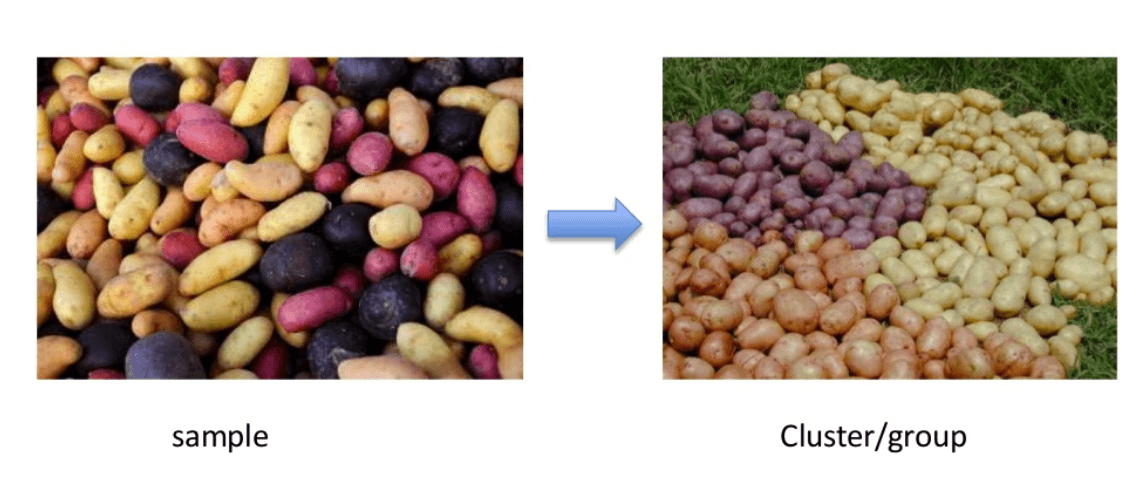As a tech expert or Artificial intelligence expert, you must notice that there is a rapid increase in the use of machine learning to make things easier. And within machine learning and Artificial intelligence, you’ll find yourself in trouble making a choice between supervised vs unsupervised learning.
What do you mean by supervised and unsupervised learning and which one should I choose? Of all this question, choosing the best one remains the most uneasy part. Although, the main difference between them is the labelled data to predict outcomes. Still, there is a close call between the two that heat up this topic.
So that is why we came up with this article, where you get to know the exact difference between supervised and unsupervised learning and which one you should use.
Table of Contents
Definitions of Supervised and Unsupervised Learning
Firstly, we will walk through some definitions of both supervised and unsupervised learning.
You are living in a tech world, so you must know the definitions of both supervised and unsupervised machine learning.
So let’s get started.
Unsupervised Learning
Unsupervised learning, also known as unsupervised machine learning, is the type of algorithm that explores patterns from unlabeled data sets.
However, unsupervised learning plays three more vital roles such as clustering, association and dimensionality reduction.
We can also say that these three are the techniques of unsupervised learning. Let’s talk about these three in more detail.
3 Types of Unsupervised Learning
Take a look at the three main types of unsupervised learning techniques.
Association:- It is an unsupervised learning technique used for market basket analysis and to find the relationship between variables in a dataset.
Clustering:- Another type of unsupervised learning technique that will let you group unlabeled data according to their similarities and differences.

Clustering plays a vital role in image compression and market segmentation.
Dimensionality reductions:- Last but not least, it is also a type of unsupervised learning that reduces the number of data to a manageable size.
That is why this technique mostly comes into action when the dimensions in a dataset are too high.
However, Dimensionality reduction plays a vital role when autoencoders remove noise from visual data. It will all result in improving the picture quality.
Supervised Learning
Supervised learning, also known as supervised machine learning, helps to predict outcomes of a given data using a labelled dataset.
It also comes with two techniques as regression and classification.
Further, we will walk through some details about both techniques of supervised learning.
2 Types of Supervised Learning Techniques
Let’s go through some more details of regression and classification.

Regression:- It is one of twww.guru99.comhe types of supervised learning that will help you understand the relationship between independent and dependent variables using a machine learning algorithm.
The models of regression will help you in predicting sales revenue projections.
You can predict numerical values based on different data points with the help of regression models.
Classification:- It is another type of supervised learning technique that will allow you to put test data accurately in specific categories.
That means it will help you to separate pears from apples. In the real world, this technique will help you classify spam from your folder.
Supervised vs Unsupervised Learning: How Do They Work?
Here we will walk through how supervised learning works.
With the help of supervised learning, you can create a set of labelled data that will train your machine to predict how much time it will take to drive from home to the workplace.
You have to input details like holidays, time of the day and weather conditions.
However, after inputting the details, the output will be the time your vehicle will take to take you from home to the workplace.
As we see earlier, you have to input the weather condition. So we can assume that if it rains on that day, the output time will increase.
Now, we help you to create a supervised learning model for this example. Firstly, you need to create a training data set containing total computing time factors such as time and weather.
The learning model will help you to understand the relationship between the amount of rain and the time the vehicle will take to get to the workplace.
So, you can see that if it rains heavier on that day, the time it takes to get you to the workplace will increase.
However, the learning model will also help you know when you left the house and at which time you’ll be driving on the road.

Unsupervised learning: it’s working
Let’s see how an unsupervised learning model works. Let me explain with an example of a baby and his cat.
The baby loves to play with the cat and identifies his cat. But how it is possible because the baby did not see the cat earlier.
But it is possible because he recognizes a cat’s features like two eyes, two long ears and walking on four legs.
However, unsupervised learning is also like this story that will give you a chance to learn from data.
Foremost Difference Between Supervised and Unsupervised Learning
Here we will show you a table that will clear out all your doubts.
| Unsupervised Learning | Supervised Learning |
| Process:- You have to give only input variables in the process of unsupervised learning. | You have to provide both input and output variables in the process of supervised learning. |
| Input data:- It explores all the hidden patterns using unlabeled data. | Supervised uses labelled data to predict outcomes from a given data. |
| Accuracy of results:- Unsupervised provide less accurate results compared to supervised. | You will get highly accurate and trustworthy results with supervised learning. |
| Number of classes:- In unsupervised learning, number classes are unknown. | You can see the number of classes are known in supervised. |
| Complexity:- It is computationally complex to use unsupervised learning. | It is a simple to use supervised process but you need to spend a lot of time in the learning machine. |
| Drawbacks:- If you do not have the human intervention to validate output, you will get inaccurate results. | You have to spend a lot of time learning the machine. |
| Algorithm used:- It is divided into three categories K-means, Hierarchical algorithm and Cluster algorithm. | It supports classification trees, neural networks and random forest. |
| Use of data:- It does not include output data and includes only input data. | It will help you to understand the relationship between the input and output. |
| Real-time learning:- You can perform unsupervised learning in real-time. | It is possible to perform supervised learning offline. |
After seeing this big table, we can assume that the main difference between both supervised and unsupervised learning is the use of labelled data.
You can also see that you will get less accurate results from unsupervised compared to supervised learning.
The reason behind this is that you need an upfront human intervention to verify the results of unsupervised learning.
What is the right choice for you? Supervised vs unsupervised learning
Have a confusion about which one is best for you. Do not worry. We will help you to make the right choice.
However, your use of case and volume of data are factors that will clear out which one will be your right choice.
Here, we will show you some advantages of both supervised and unsupervised learning.
Please take a look at them and validate which one suits your requirements.
Unsupervised learning wins
- You can explore all the hidden patterns using unlabeled data with the help of unsupervised learning.
- It can be an easier task to get unlabeled data than labelled data from your computer.
- You can perform unsupervised learning in real-time.
Supervised learning Wins
- The supervised method will help you to predict outcomes for a given data.
- It will help you to solve real-world computation problems.
- You can optimize performance criteria using supervised learning.
We hope these advantages will help you to make the right choice. But still, if you are facing problems, let me explain to you.
It can be a challenging task to manage big data with supervised learning.
But we are sure that you will get accurate and trustworthy results from supervised learning.
So that is why we will recommend you use unsupervised learning for managing big data.
But remember that the chances of getting inaccurate results will increase because there will be no transparency.
Still, facing difficulties making a call between these two. Do not worry. Please check out our Bonus tip section.
Bonus Tip:- The best of these two: Semi-supervised learning
Surprise! Surprise! We are here with a bonus tip for you to clear out all your confusion between supervised and unsupervised.
Semi-supervised learning is one of the best mediums, where you can use a dataset with labelled and unlabeled data.
One big plus is that Semi-supervised is helpful if you are trying to classify high volume data, or you are extracting relevant features from data.
Wrapping up
After reading the article, we hope you get to know the difference between supervised vs unsupervised learning. However, supervised learning is predicting outcomes for a given data, and unsupervised is for exploring hidden patterns from unlabeled data. We come to the point that the main difference between both is the use of labelled data.
